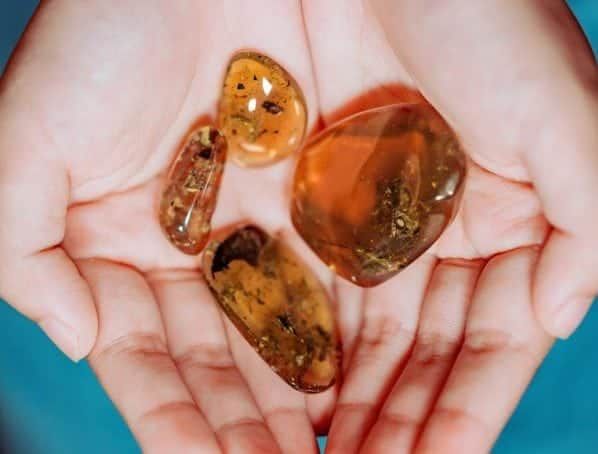
A frog that hopped next to the dinosaurs has been discovered preserved in amber, scientists have revealed.
The 99 million year old amphibian was chasing its next meal, a beetle, when it got trapped in the tree sap and preserved for eternity.
Now scientists have used a CT scan to unlock some of the secrets of the tiny creature, one of the world’s oldest frogs.
Scientists from China and the US found the juvenile frog in modern day Myanmar and say that the fossil, ‘Electorana limoae’ , is among the oldest known examples of frogs preserved in amber.
The findings show that frogs have existed in wet rainforest environments for at least 99 million years and this little wonder may give an insight into the complete frogs tree of life.
The amazing fossil and species descriptions were published today in Nature’s Scientific Reports.
Dr David Blackburn, study co-author and the associate curator of herpetology at the Florida Museum of Natural History, said: “It’s almost unheard of to get a fossil frog from this time period that is small, has preservation of small bones and is mostly three-dimensional. This is pretty special.”
Frogs have been around for at least 200 million years, hopping alongside dinosaurs and this well-preserved skeleton, barely an inch long, gives scientists a more detailed insight into the life of the amphibians.
Dr Blackburn said: “Ask any kid what lives in a rainforest, and frogs are on the list. But surprisingly, we have almost nothing from the fossil record to say that’s a longstanding association.”
Less than an inch long, Electrorana is the most well-preserved of the group of four frogs found by the scientists.
Clearly visible in the amber are the frog’s skull, its forelimbs, part of its backbone, a partial hind limb and the unidentified beetle. The other amber fossils contain two hands and an imprint of a frog that likely decayed inside the resin.
The amber deposits were the fossils were found have produced weird and wonderful creatures in the past. Scientists have found everything from aquatic spiders to velvet worms, but never frogs.
Little limoae is the first of its kind and scientists are excited, Dr Blackburn said: “We don’t have a lot of single-species frog communities in forests. It seems extremely unlikely that there’s only one. There could be a lot more fossils coming.”
However, the discovery has also left Dr Blackburn a bit stumped, he said: “The existing bones provide clues about Electrorana’s possible living relatives, but the results are puzzling.
“Species that have similar features include fire-bellied toads and midwife toads – Eurasian species that live in temperate, not tropical, ecosystems.”
Frogs in amber are quite rare, with previous examples found in the Dominican Republic and Mexico and dating back only about 40 million and 25 million years, respectively.
Gathering CT skeletal data for both living and extinct frogs, one of Dr Blackburn’s long-term projects, could help illuminate ancient evolutionary relationships, possibly clarifying how Electrorana fits into the frog tree of life.
In the meantime, Dr Blackburn nurtures the hope that other frogs in amber will be discovered, making Electrorana more than a one-hit wonder.
https://www.thelondoneconomic.com/entertainment/music/brazils-oldest-known-mammal-that-lived-with-the-dinosaurs-is-named-after-david-bowie/12/06/
https://www.thelondoneconomic.com/news/monstrous-new-russian-sabre-tooth-fossils-clarify-early-evolution-of-mammals/08/06/